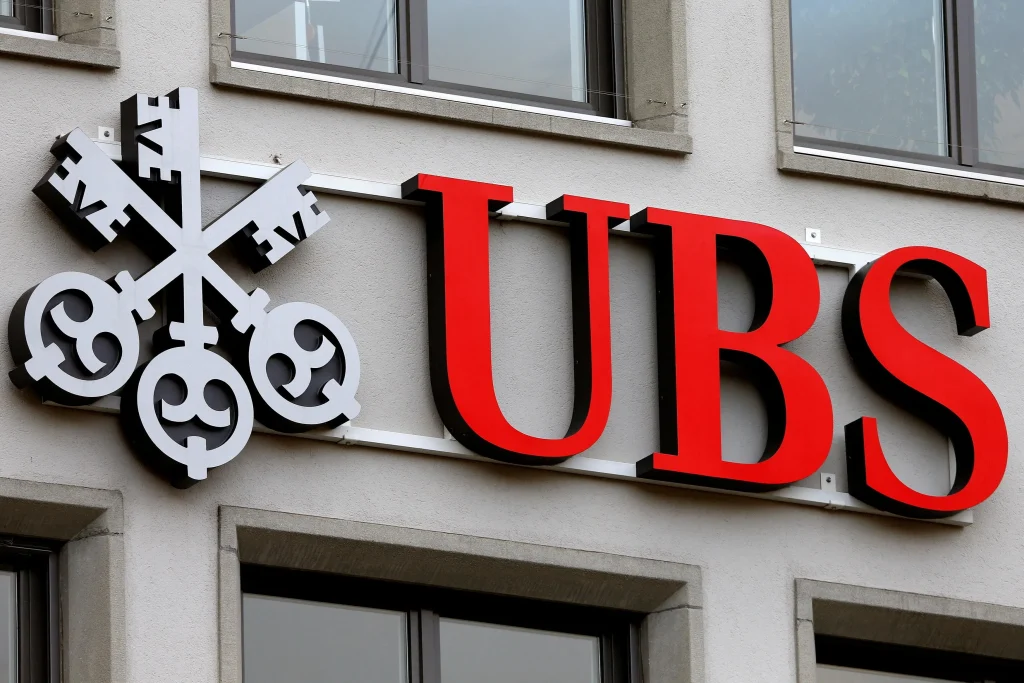THE US$26 billion headline capital charge to protect Swiss taxpayers from the risk that UBS Group ever fails is worse than anyone expected. And yet UBS’s shares jumped as much as 8 per cent on the news on Friday ( Jun 6) – what gives?
It’s not that investors now know the costs of Switzerland’s beefed-up “too big to fail” rules, which follow Credit Suisse’s 2023 collapse. There’s a lot of uncertainty about the draft law’s final form. Most likely UBS shares have jumped because investor judge that the final bill will be lower – and because they know it’s not due to be paid in full until 2034 at the earliest.
The bank isn’t happy. “UBS strongly disagrees with the extreme increase in capital requirements that has been proposed,” it said in a statement. While it supported most of the changes in principle, the proposed capital increase is “neither proportionate nor internationally aligned.”
The draft law contains a lot that is sensible and with which UBS and most experts agree. It brings in a Senior Managers’ Regime like the UK’s, to ensure top executives can be held responsible for everything the bank does and that their pay can be clawed back when it errs. It also gives more power to Swiss regulators to intervene when a bank is being poorly managed: the lack of this ability kept watchdogs on the sidelines during Credit Suisse’s long demise. The central bank gets more reliable powers to supply emergency liquidity, too, among other things.
The contentious and costly part for UBS is the demand that it should fully capitalise its foreign subsidiaries, which the government and independent advisors calculated will require as much as US$23 billion of extra common equity tier one capital. (The other US$3 billion in the headline comes from capital quality changes that affect how banks can account for deferred tax assets and some other intangible assets.)
There’s plenty of opportunity for UBS to negotiate this change down during the parliamentary consultation and debate, which will begin later this year. That won’t move quickly; the draft law isn’t expected to be enacted until the start of 2028. Currently, UBS only needs capital at group level to cover about 60 per cent of the equity value of its foreign units, and only 45 per cent must be common equity; the rest can be additional tier one bonds. In the draft, 100 per cent will need to be common equity.
BT in your inbox

Start and end each day with the latest news stories and analyses delivered straight to your inbox.
UBS might be able to negotiate back to a mix of equity and additional tier one, or it might be able to get the coverage level reduced – but ultimately, this is going to deliver the biggest hit. As I’ve written before, it also makes sense as a policy.
The bank will still have six to eight years from the law being enacted until it must meet whatever the new requirement ends up being, which is why 2034 is the earliest legal deadline. Andrew Coombs, an analyst at Citigroup, said the long lead time meant that billions of US dollars in share buybacks forecast for the next three years still looked plausible; the bank said Friday it will continue with this year’s payouts as planned.
UBS may argue that bank investors will judge its capital needs against the full target as soon as the law comes into force. That was the case for banks after the 2008 financial crisis, when many were seen as too weak and had to raise capital swiftly. I’m less convinced; analysts and investors are more likely to view it as a technical rather than necessary requirement, giving the bank time to adjust. That doesn’t mean UBS’s long-term profitability won’t be hit, which will affect what its shares are worth. But the bank has ways it can adapt; they just involve tradeoffs.
The most radical reaction would be breaking up its business in some way, such as spinning off its US arm, or partially listing its core Swiss business and moving its headquarters to another country with a more favourable regime. It could also change its holding company-parent bank legal structure in ways that could improve capital efficiency; but that would mean losing some funding cost and tax benefits.
“We expect that UBS might commence work to study the feasibility of strategic actions such as these,” wrote advisers at Alvarez & Marsal in a technical study commissioned by the government to support the draft law. Major surgery on the firm’s structure or relocation remain extreme and unlikely in my view, unless UBS gets absolutely nothing out of the consultation process. “UBS remains committed to its diversified business model and its unique regional footprint,” the bank said.
UBS could also use more risk transfers or change its loan-led approach in foreign wealth businesses to reduce capital requirements. That would also alter its revenue and returns in good or bad ways.
Even before all this, there are reasons to think the US$26 billion headline figure won’t last or be as costly as it seems. For one, the bank has plans to repatriate about US$5 billion of capital from its overseas units already, which could be done in a way that reduces the carrying value of those subsidiaries and so also cuts their capital requirements at group level, the Alvarez and Marsal report points out. UBS’s version of the headline hit included the benefit of this repatriation. On top of that, other changes in the law cut the amount of additional tier one UBS needs by US$8 billion, meaning a smaller net increase in total capital requirements, according to Bloomberg Intelligence.
There is plenty to chew on before UBS and its investors can fully digest the implications of this proposed law – but there’s a good chance that it all works out to be less painful for the bank than the big headline number suggests. BLOOMBERG


